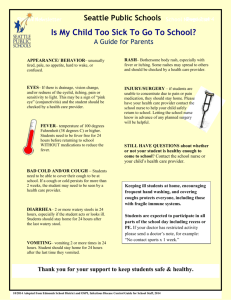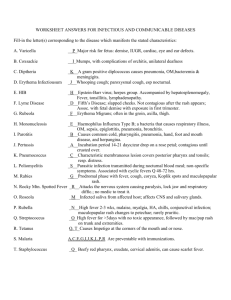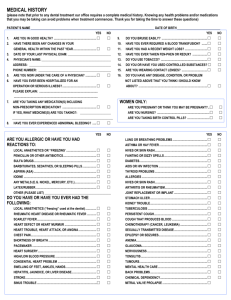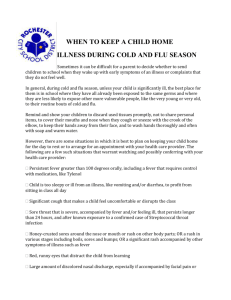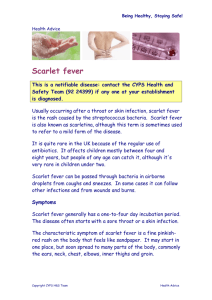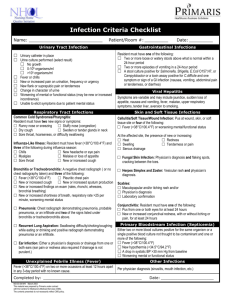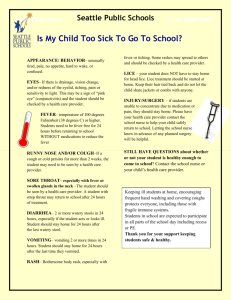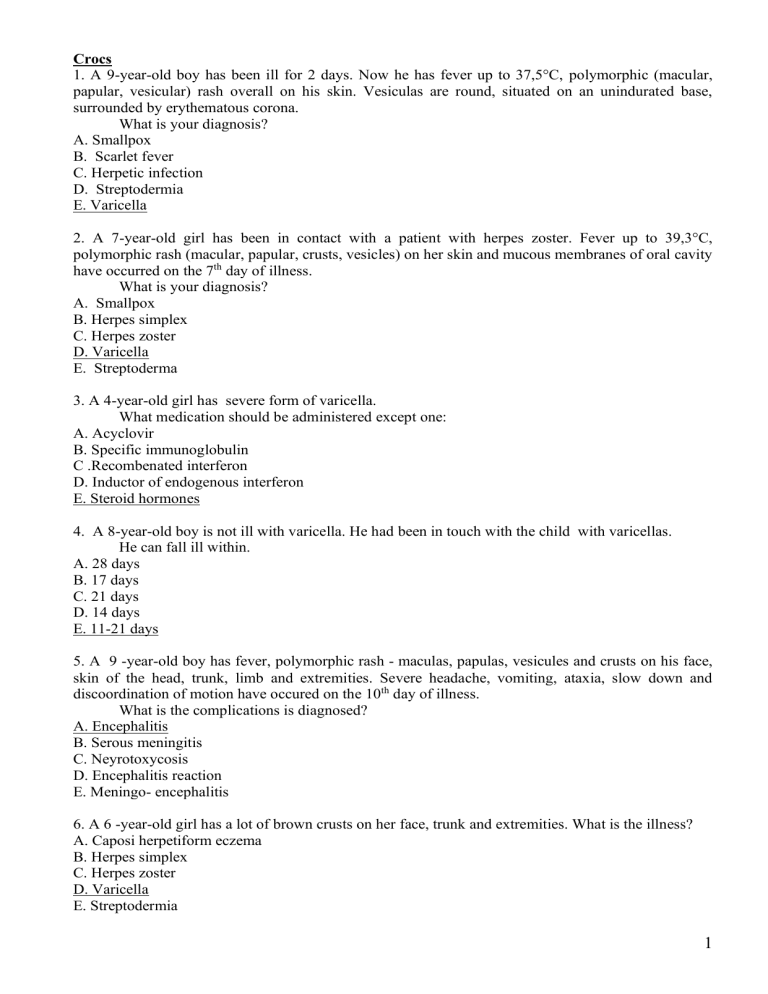
Crocs 1. A 9-year-old boy has been ill for 2 days. Now he has fever up to 37,5°С, polymorphic (macular, papular, vesicular) rash overall on his skin. Vesiculas are round, situated on an unindurated base, surrounded by erythematous corona. What is your diagnosis? A. Smallpox B. Scarlet fever C. Herpetic infection D. Streptodermia E. Varicella 2. A 7-year-old girl has been in contact with a patient with herpes zoster. Fever up to 39,3°С, polymorphic rash (macular, papular, crusts, vesicles) on her skin and mucous membranes of oral cavity have occurred on the 7th day of illness. What is your diagnosis? A. Smallpox B. Herpes simplex C. Herpes zoster D. Varicella E. Streptoderma 3. A 4-year-old girl has severe form of varicella. What medication should be administered except one: A. Acyclovir B. Specific immunoglobulin C .Recombenated interferon D. Inductor of endogenous interferon E. Steroid hormones 4. A 8-year-old boy is not ill with varicella. He had been in touch with the child with varicellas. He can fall ill within. A. 28 days B. 17 days C. 21 days D. 14 days E. 11-21 days 5. A 9 -year-old boy has fever, polymorphic rash - maculas, papulas, vesicules and crusts on his face, skin of the head, trunk, limb and extremities. Severe headache, vomiting, ataxia, slow down and discoordination of motion have occured on the 10th day of illness. What is the complications is diagnosed? A. Encephalitis B. Serous meningitis C. Neyrotoxycosis D. Encephalitis reaction E. Meningo- encephalitis 6. A 6 -year-old girl has a lot of brown crusts on her face, trunk and extremities. What is the illness? A. Caposi herpetiform eczema B. Herpes simplex C. Herpes zoster D. Varicella E. Streptodermia 1 7. A 4 -year-old boy has fever, maculas, papulas, vesicules and crusts on her face, skin of the head, trunk, extremities and mucous membranes of oral cavity. He has been ill for 5 days. What the time will be the patients isolated? A. In 5 days after of late rash B. In all time of the disease C. In 5 days begins of the disease D. In 7 days after crusts E. In 12 days after the onset of the disease 7. A 5-year-old boy has been ill for 5 days. The disease had abrupt onset with fever up to 38,1 C, cough, conjunctivitis, edema of eyelids. Maculopapular rash appears on his face, neck and behind his ears on the 5th day of the disease. The next day the rash spreads to his trunk. What is your diagnosis? A. Adenoviral infection B. Measles C. Rubella D. Infectious mononucleosis E. Scarlet fever 8. A 7-year-old boy has been ill for 2 days. He complains of cough, coryza, headache, fever up to 38C. There is conjunctival hyperemia, epiphora, enanthema on the mucosa of the soft and in part of the hard palate, whitish papulae looking like poppy-seed, surrounded by a narrow band of hyperemia opposite the molar teeth. What is your diagnosis? A. Measles B. Rubella C. Scarlet fever D. Enteroviral infection E. Adenoviral infection 9. A 2-year-old boy is not vaccinated against measles. He had been in touch with the child with catarrhal period of measles and took immunoglobulin. He can fall ill within? A. 28 days B. 17 days C. 21 days D. 14 days E. 7 days 10. A 5-year-old child has low-grade fever, enanthema, enlarged post-auricular cervical and suboccipital lymph nodes, pale red small macular rash, which localizes mainly on the extensor surface of the extremities, back and buttocks. What is your diagnosis? A. Infectious mononucleosis B. Measles C. Scarlet fever D. Rubella E. Enteroviral infection 2 11. A 2-year-old child full ill acutely: ever and rash appeared. Now it has slight malaise, coryza and cough, enanthema on its soft palate. There is pale red small macular rash on its back and buttocks. Postauricular cervical and subboccipitall lymph nodes are the size of a large pea, hard and slightly tender on palpation. What is your diagnosis? A. Rubella B. Measles C. Scarlet fever D. Infections mononucleosis E. Entero viral infection 12. A 3-year-old girl has had fever, difficulty of nasal breathing, enlarged cervical lymph nodes. Ampicillin was prescribed by a physician. Fever up to 38,3oC, lacunar tonsillitis, maculopapular rash on the skin, enlarged liver and spleen had occured on the 3rd day of illness. Blood count contained leucocytosis, limphomonocytosis, atypical mononuclear cells - 20 % . What is your diagnosis? A. Measles B. Rubella C. Infectious mononucleosis D. Scarlet fever E. Adenoviral infection 13. A 10-year-old boy had complained of malaise, sore throat, difficulty of nasal breathing, fever up to 39 C on the 4th day of illness. Now he has pallor of the skin, edema of his upper eyelids, enlarged postcervical lymphnodes. Mucous membrane of oropharynx is hyperemic, tonsils are enlarged, covered by membranes, which are separated easily. Liver and spleen are enlarged. What is your preliminary diagnosis? A. Lymphogranulomatosis B. Adenoviral infection C. Tonsillar diphtheria D. Scarlet fewer E. Infectious mononucleosis 14. A 2 year-old boy has been hospitalized with measles-like rash, tonsillitis, lymphoadenopathy, difficulty of nasal breathing and hepatosplenomegaly. What is your preliminary diagnosis? A. Infectious mononusleosis B. Cytomegaloviral infection C. Measels D. Serum sickness E. Rubella 15. A 6 -year-old child has infectious mononucleosis. Which blood cells may confirm the diagnosis? A. Polymorphonuclear cells B. Basophilic leukocyties C. Atypical mononuclear cells D. Eosinophils E. Erythrocytes 3 16. A 10-year-old child is seen in clinic and diagnosed an having infectious mononucleosis. Point to the laboratory method which helps confirm the diagnosis. A. Urinalysis B. Blood count with atypical mononuclear cells C. Coagulogram D. Smear from oropharynx E. Transaminase level 17. A 10-year-old girl complained of fever, rash, abdominal pain, artralgiae on admission. In medical examination scarlet fever-like rash, symptoms of ,,hood", ,,gloves" and ,,socks" have been discovered. What is your preliminary diagnosis? A. Measeles B. Allergic rash C. Rubella D. Scarlet fewer E. Pseudotuberculosis 18. A 5-year-old boy fell ill abruptly: fever up to 38,5, sore throat, abdominal pain. Scarlet fever-like rash, artralgiae and frequently passed stools occurred on the 4 l day f illness. In medical examination hyperemia and edema of skin on the face, hands and feet, hyperemia of palatal arches, soft palate, uvula back walls of pharynx, ,,raspberry tongue", pains in epigastrium and near the umbilicus was discovered. Watery stools occured 4-6 times a day with small admixture of mucus. Padalka's symptom was positive. What's your preliminary diagnosis? A. Enteroviral infection B. Scarlet fewer C. Abdominal typhoid D. Pseudotuberculosis E. Rubella 19. A 7-year-old boy has moderate form of pseudotuberculosis. Which antibacterial medication should be administered for etiotropic therapy? A. Penicillin B. Ampicillin C. Chloramphenicol D. Erytromycin E. Cefalosporins of the first generation 20. A 7-year-old boy fell ill abruptly: fever up to 40 C with rigor, artralgia, myalgia, abdominal pain. Polymorphic rash with macular and scarlet fever like elements appeared on the 4 th day of illness. Ictericity of skin and sclerae occurred on the 6th day of illness. Liver and spleen were enlarged and tender. Padalka's symptom was positive. What's your preliminary diagnosis? A. Measles B. Rubella C. Scarlet fewer D. Pseudotuberculosis E. Abdominal typhoid 4 21. A 8 - year-old boy full ill abruptly fever up to 39 C, headache, recurrent vomiting, sore throat. There was punctiform rash on reddened skin on his trunk, upper part of the abdomen, and in the skin folds, especially in axillae, cubital, inquinal. The soft palate is covered with erithematous punctiform lerions and scattered petechiae. Tonsils were enlarged, reddened with superficial necrosis in the form of patches. Submaxillary lymph nodes were enlarged, dense and tender. BP is 140/90; Ps is 120 per min. What is your diagnosis? A. Adenoviral infection B. Scarlet fever C. Diphtheria D. Measles E. Pseudotuberculosis 22. A 7 -year-old boy has been ill for 2 weeks, when coryza occured. Vaccination terms were not kept to. Now he has difficulty of nasal breathing, sanioserous nasal discharge, excoriations on the skin at the entrance into the nose and on the upper lip. Fibrinous membranes are discovered by rhinoscopy on the mucous membrane of the nose. Mucous membrane of oropharynx is intact. What is your diagnosis? A. Nasal diphtheria B. Adenoviral infection C. Rhinoviral infection D. Allergic rhinitis E. Maxillary sinusitis 23. A 3-year-old boy has had severe form of tonsillar diphtheria. What complication commonly leads to lethal outcome? A. Nephrosonephritis B. Pneumonia C. Myocarditis D. Polyneuropathy E. Soft palate paralysis 24. A 11-year-old girl had had tonsillitis and taken erythromycin at home 3 weeks ago. Now she complains of nasal quality to the voice and nasal regurgitation. Soft palate is immovable in phonation. Vaccination terms were not kept to. What is your preliminary diagnosis? A. Poliomyelitis B. Diphitieritic polyneuropathy C. Encephalitis D. Botulism E. Poliomyelitis-like form of enteroviral infection 25. A-5-year-old boy has been ill for 3 days: low-grade fever, malaise, anorexia, dry cough, then hoarseness. Now he has striking pallor of the skin, perioral cyanosis, soundless cough, aphonia, stenotic breath, retraction of complaisant places of the thorax, tachycardia 150 strokes per min. The boy was not vaccinated. What is your preliminary diagnosis? A. Laryngeal diphtheria B. Whooping cough C. Foreign body D. Epiglottidis E. Parainfluenzal laryngotracheitis 5 26. A 5-year-old child has tonsillar diphtheria, which is complicated by myocarditis. What is a pathogenesis of this complication? A Autoimmune lesion B. Cytotoxic influence of corynebacteria C. Diphtheritic toxin D. Middlmolecular peptides E. Metabolic product of bacteria 27. A 2-year-old boy is not vaccinated against measles. He had been in touch with the child with catarrhal period of measles and took immunoglobulin. He can fall ill within. A. 28 days B. 17 days C. 21 days D. 14 days E. 7 days 28. A baby was born on the 8 th month of gestation. It had microcephalia, cataract, cardiac defects. On the 2 nd month of the pregnancy its mother had low-grade fever, enlarged lymph nodes, and pale red small macular rash on her face, trunk and extremities. These signs disappeared after 3 days without residual occurrence. What is your diagnosis? A. Toxoplasmosis B. Cytomegaloviral infection C. Herpetic infection D. Chlamydic infection E. Congenital rubella 29.A 8- year-old girl complained of fever up to 38,6 C, sore throat, rash. In medical examination lacunar tonsillitis, hyperemia and enanthema of soft palate, punctiform rash which localized mainly on flexor surface of the extremities was discovered. Nasolabial area was pale. Which antibacterial medications should be administered? A. Gentamycin B. Penicillin C. Chloramphenicol D. Lincomycin E. Tetracycline 30. A 8 - year-old boy full ill abruptly fever up to 39 C, headache, recurrent vomiting, sore throat. There was punctiform rash on reddened skin on his trunk, upper part of the abdomen, and in the skin folds, especially in axillae, cubital, inquinal. The soft palate is covered with erithematous punctiform lerions and scattered petechiae. Tonsils were enlarged, reddened with superficial necrosis in the form of patches. Submaxillary lymph nodes were enlarged, dense and tender. BP is 140/90; Ps is 120 per min. What is your diagnosis? A. Adenoviral infection B. Scarlet fever C. Diphtheria D. Measles E. Leukosis 6 31.A 3-year-old child has a typical mild form of scarlet fewer and is treated at home. Which antibacterial medication should be administered for etiotropic therapy? A. Erytrimycin B. Gentamycin C. Chloramphenicol D. Doxycycline E. Tetracycline 32.A 8-year-old boy has scarlet fewer and takes antipyretic and vitamins. Weakness, anorexia, skin pallor, face edema, oliguria occurs on the 14 th day of illness. Specific gravity of urine is 1030, protein level is 1 g/1, erythrocytes are 60 in the field vision. Hyaline cylinders are present too. What is complication has occurred? A. Tumour of urinary bladder B. Pyelonephritis C. Urolhhic disease D. Glomerulonephritis E. Polyps of urethra 33 .A 7 -year-old boy has been ill for 2 weeks, when coryza occured. Vaccination terms were not kept to. Now he has difficulty of nasal breathing, sanioserous nasal discharge, excoriations on the skin at the entrance into the nose and on the upper lip. Fibrinous membranes are discovered by rhinoscopy on the mucous membrane of the nose. Mucous membrane of oropharynx is intact. What is your diagnosis? A. Nasal diphtheria B. Adenoviral infection C. Rhinoviral infection D. Allergic rhinitis E. Maxillary sinusitis 34. A 3-year-old boy has had severe form of tonsillar diphtheria. What complication may lead to lethal outcome? A. Nephrosonephritis B. Pneumonia C. Myocarditis D. Polyneuropathy E. Soft palate paralysis 35. A 11-year-old girl had had tonsillitis and taken erythromycin at home 3 weeks ago. Now she complains of nasal quality to the voice and nasal regurgitation .Soft palate is immovable in phonation. Vaccination terms were not kept to. What is your preliminary diagnosis? A. Poliomyelitis B. Diphitieritic polyneuropathy C. Encephalitis D. Botulism E. Poliomyelitis-like form of enteroviral infection 7 36. A-5-year-old boy has been ill for 3 days: low-grade fever, malaise, anorexia, dry cough, then hoarseness. Now he has striking pallor of the skin, perioral cyanosis, soundless cough, aphonia, stenotic breath, retraction of complaisant places of the thorax, tachycardia 150 strokes per min. The boy was not vaccinated. What is vour preliminary diagnosis? A. Laryngeal diphtera B. Whooping cough C. Foreign body D. Epiglottidis E. Parainfluenzal laryngotracheitis 37.A 15-years-old girl complains of weakness, sore throat, fever up to 37,9 C. She has been will 3 days after being in contact with the patient with tonsillitis. In medical examinacion congestive hyperemia and moderate edema of oropharyngeal mucous membrane is found. Continuous grayish membrane is the form of a film are located on the tonsils. The patches are taken off with difficulty and bleeding of the mucous membrane is present. The patches spread on to the soft palate, the palatal arches and the uvula. Regional lymph nodes are enlarged and painful. What is your diagnosis? A. Lacunar tonsillitis B. Follicular tonsillitis C. Tonsillar diphteria D. Infections mononucleosis E.Simanocesky-Vincent's disease 38.A 5-year-old child has tonsillar diphtheria, which is complicated by myocarditis. What is a pathogenesis of this complication? A Autoimmune lesion B. Cytotoxic influence of corynebacteria C. Diphtheritic toxin D. Middlmolecular peptides E. Metabolic product of bacteria 39.A 3-year-old girl has had fever, difficulty of nasal breathing, enlarged cervical lymph nodes. Ampicillin was prescribed by a physician. Fever up to 38,3 C, lacunar tonsillitis, maculopapular rash on the skin, enlarged liver and spleen had occured on the 3rd day of illnes. Blood count contained leucocytosis, limphomonocytosis, atypical mononuclear cells-20 % . What is your diagnosis? A. Measles B. Rubella C. Infectious mononucleosis D. Scarlet fever E. Adenoviral infection 8 40.A 10-year-old boy had complained of malaise, sore throat, difficulty of nasal breathing, fever up to 39 C on the 4th day of illness. Now he has pallor of the skin, edema of his upper eyelids, enlarged postcervical lymph nodes. Mucous membrane of oropharynx is hyperemic, tonsils are enlarged, covered by membranes, which are separated easily. Liver and spleen are enlarged. What is your preliminary diagnosis? A. Lymphogranulomatosis B. Adenoviral infection C. Tonsillar diphtheria D. Scarlet fewer E. InfecJous mononucleosis 41.A 2 year-old boy has been hospitalized with measles-like rash, tonsillitis, lymphoadenopathy, difficulty of nasal breathing and hepatosplenomegaly. What is your preliminary diagnosis? A. Infectious mononusleosis B. Cytomegaloviral infection C. Measels D. Serum sickness E. Rubella 42.A 6 -year-old child has infectious mononucleosis. Which blood cells presence may confirm the diagnosis? A. Polymorphonuclear cells B. Basophilic leukocyties C. Atypical mononuclear cells D. Eosinophils E. Erythrocytes 43.A 10-year-old child is seen in clinic and diagnosed an having infectious mononucleosis. Point to the laboratory method which helps to confirm the diagnosis. A. Urinalysis B. Blood count with atypical mononuclear cells C. Coagulogram D. Smear from oropharynx E. Transaminase level 44.A 4-year-old boy complains of fewer up to 38,9 C, pain in chewing and opening the mouth, headache. Right parotis gland is enlarged and painful in palpation. The skin over the parotis gland does not change. In lesioned side stensen's duct is reddened and edematous. What is your diagnosis? A. Infectious mononucleosis B. Mumps C. Rubella D. Cervical lymphadenitis E. Sialoademitis 45.A 6-year-old boy complains of headache, malaise, pain in chewing, fever up to 39C.The following day the enlarged parotid glands are noticeable. Swelled parotid glands obliterate the fossas are retromaxillaris. The skin over the inflamed glands is tense and lustrous, remains of normal colour. Stensen's ducts are reddened and edematous. What is your diagnosis? A. Tumor of parotid glands B. Mumps C. Cervical lymphadenitis D. Sialolithic disease E. Toxic form of tonsillar diphtheria 9 46.A 7-year-old boy fell ill abrupthy: fever up to 39C, headache, recurrent vomiting. Positive meningeal signs are present. The boy had been in contact with patient with mumps. He is not vaccinated against mumps. Which is more probability diagnosis? A. Mumps meningitis B. Meningococcal meningitis C. Pneumococcal maningitits D. Staphylococcal meningitis E. Tuberculosis meningitis 47.A 10-year-old boy had mumps. On the 5th day of illness the child's general condition become worse. Abdomen pain, nausea, anorexia and then vomiting occurred. Pain in the region of the left hypochondria was determined by palpation. The amylase of the blood and diastase of the urine increased highly. Which lesion occured? A. Appendicitis B. Pancreatitis C. Mesadenitis D. Cholecystitis E. Gastritis 48.A 5-year-old boy had been ill 2 weeks ago. The disease began from dry cough, which increased gradually. Paroxysmal cough appeared and whoops occurred. In paroxysm the patient's face is read, the cervical wins are engorged. There are haemorrhages in the sclear. Leukocytes level is 16xl0 9/I, lymphocytes-72%, ESR-4 mm/h. What is your preliminary diagnosis? A. Whooping cough B. Adenoviral infection C. Foreign body in respiratory tract D. Parainfluenza with laryngotracheitis E. Tuberculosis bronchodenitis 49.A 2-year-old girl complains of paroxysmal cough with whoops. There is edematous face, haemorrages in the sclera, shallow ulcer on the frenulum of the tongue. Auscultation reveals dry rales. Examination of the oropharynx leads to cough paroxysms. What is your preliminary diagnosis? A. Whooping cough B. Obstructive bronchitis C. Foreign body in respiratory tract D. Pneumonia E. Stenosis laryngotracheitis 50.A 2 -year- old girl had been ill for 2 weeks. Now she has paroxysmal cough with whoop xnd vomiting, hemorrhages in her sclera, shallow ulcer on the frenulum of the tongue. Auscultation reveals dry rales. Point to medication for prophylaxis of this disease: A. Antibiotics B. APDT-vaccine C. ADT-anatoxin D. ADT-M-anatoxine E. Bacteriophages 10 51.A 1-year-old baby has whooping cough. In one of cough paroxysms the child becomes cyanotic and its breathing disappears. Point to the cause of breathing disappearance. A. Inhibition of respiratory center B. Edema of larynx mucous membrane. C. Brain edema D. Lung edema E. Laryngospasm 52. In a 10-year-old girl having mumps fever, recurrent vomiting and severe surrounding pain in upper part of her abdomen occurred on the 4th day of illness. Which is laboratory test should be prescribed to determine the diagnosis? A. Bilirubin level B. Glucose level C. Thymol test D. Activity of ALT E. Analase of blood 53.A 1 year-old baby fell ill abruptly fever up to 38C, coryza, cough. Hoarseness of voice, dry barking cough, stenotic breathing and motor anxiety occur at night. What pathogene caused this disease? A. Adenovirus B. Corynebacterium diphtheria C. Parainfluenza virus D. Rhinovirus E. Reovirus 54.A 9-month-old baby has spinal form of poliomyelitis. What group of viruses does the causative agent of the disease belong to? A. Picornaviruses B. Paramyxoviruses C. Togo viruses D. Adenoviruses E. Rotaviruses 55.An i8-month-old not vaccinated baby fell ill acutely: fever up to 38,5 C, anorexia, weakness, motor anxiety, mild catarrhal signs and diarrhea. Loss muscle tone, absence of active movement and tendon reflexes occurred on the right leg on the 5th day of illness. Cutaneous sensitivity is present. What is your preliminary diagnosis? A. Polimyelities B. Viral encephalitis C. Acute respiratory viral infection D. Acute intestinal infection E. Osteomyelitis 56.A 2-year-old boy is having low-grade fever, mild catarrhal signs for 3 days. The body temperature decreases on the 4th day of illness and flabby paralysis on his right leg occurs. What clinical form of poliomyelitis is present? A. Spinal B. Abortive C. Meningeal D. Pontine E. Bulbar 11 57.A 18-month-old not vaccinated baby was hospitalized due to flabby paralysis of the left leg. There is a loss muscle tone, absence of active movement and tendon reflexes. Cutaneous sensitivity is present. Where is the CNS lesion localized? A. Truncus cerebri B. Posterior cornua of spinal cord C. Anterior cornua of spinal cord D. Cerebellum E. Pia matter 58.A 10-year-old boy fell ill abruptly after staying at a beach. Recurrent vomiting, severe headache, fever appeared in the evening. Meningeal signs are positive. Cerebrospinal fluid is transparent, its pressure increases, the number of CSF leukocytes is 350 cells /mm3 (lymphocytes -80%), glucose level-2.21 mmol/1, protein level-0.66 g/1. Pandi's reaction (+).What is your preliminary diagnosis? A. Forest-spring encephalitis B. Purulent meningitis C. Tuberculous meningitis D. Food poisoning E. Serous meningitis of viral etiology 59.A 6-year-old boy fell ill abruptly: fever up to 39,5 C, severe headache, nausea and vomiting .Meningeal signs are positive. Cerebrospinal fluid is turbid, cytosis is 1450/cells/mm3 (polimorphonuclear cells-90%), protein level is 1.8 g/1, Pandi's reaction (+++) .What antibiotics should be administered for the start therapy? A. Tetracycline B. Ofloxacin C. Ceftriaxone D. Rifampicin E. Erytromicin 60.A 4-month-old-baby fell ill acutely: fever up to 39,5 C, vomiting, weakness. In 5 hours maculopapular rash occurred on the lower extremities, the buttoks, the abdomen. After 10* hours from onset of the disease hemorrhages rash then necroses appeared on the same parts of the skin. What is your diagnosis? A. Meningococcal infection B. Rubella C. Measles D. Influenza E. Hemorrhagic vasculitis 61. In a family, which consists of 4 persons from 3 till 30 years a cases of meningococcal infection occurs. What urgent prophylaxis should be given among contacted persons? A. Antibiotics B. Vaccination of antimeningococcal vaccine C. Prophylaxis not condacted D. Gargling of oropharynx by antiseptics E. Bacteriophages 12 62.A 5-year-old boy fell ill abruptly: fever up to 39,5C,severe headache, vomiting. Meningeal signs are positive. Neutrophile pleocytosis are present in cerebrospinal fluide. Purulent meningitis is diagnosed. What is the most probable etiology of meningitis? A. Meningococcus B. Pneumococcus C. Staphylococcus D. Hemophilus influenza E. Micobacterium tuberculosis 63.1n a 10-year-old baby septic form of meningococcal infection with infective toxic shock of the 1st stage was diagnosed. Which medications should be given for start therapy? A. Prednisolone and immunoglobuline B. Prednisolone and penicillin C. Levomycetin sodium succinate and prednisolone D. Penicillin and immunoglobulin E. Immunoglobulin 64. A baby of 9 months fell ill sharply: the temperature rose up to 38.8°C, there was a cough, hoarse voice. In some hours the condition sharply aggravated, symptoms of laryngotracheitis with stenosis of I-II degree developed. What of causative agents has most likely caused croupe in the baby? A.Virus of flu B. Virus of paraflu C. Adenovirus D. Enterovirus E. Rhinovirus 65. A child is 2 years old. The disease started sharply with rise of the temperature up to 38.8°C, vomiting, headache, flaccidity, pains in the abdomen, softening of stool. In 3 days there were weakness in the left leg, hypotonia, hyporeflexia, hypodynamia at the same place, the skin on the left leg was pale and cold. What are the ways of distribution of the causative agent of this disease? A. Respiratory B. Fecal - oral C. Respiratory and fecal-oral D. Respiratory and inoculable E. Fecal - oral and parenteral 66. A child of 8 years old is hospitalized with complaints on sharp onset of the disease, febrile fever, marked headache, repeated vomiting. On the 2-nd day of the disease the child developed nystagmus, dysphagia and aphasia. Respiration is superficial, cough is silent. What form of poliomyelitis should we think of? A. Nonparalytic, a meningeal form B. Paralytic, a spinal form C. Paralytic, a bulbar form D. Nonapparent form E. Paralytic, an encephalic form 13 67. A child of 4 years old is hospitalized with complaints on sharply developed paralysis of the right leg agaisnt the background of temperature elevation up to 39°C. 4 days before there was a subfebrile fever with insignificant catarrhal symptoms, pain in the abdomen, sweating. Poliomyelitis is suspected. What symptoms, except one, will be characteristic of poliomyelitis? A. Atonia (hypotonia) B. Adynamia (hypodynamia) C. Areflexia (hyporeflexia) D. Anesthesia (hyposthesia) E. Atrophy (hypotrophy) 68. A child is 2 years old. The disease began with rise of the temperature up to 39°C, repeated vomiting, in some hours hemorrhagic rash developed on the skin of buttocks, shins, there were spasms. On admission the condition was comatous, pulse was threadlike, 150 beats/min, arterial pressure 60/10mm Hg., plentiful confluent hemorrhagic rash on the skin of buttocks, legs, abdomen, back. What syndrome has developed in the child? A. Acute cardiovascular insufficiency B. Acute adrenal insufficiency C. Acute renal failure D. Edema of the brain E. Disseminated intravascular coagulation of blood (DIC) syndrome 69. A 5 year-old child fell ill sharply. Fever, intensive headache, repeated vomiting and meningeal signs dominated in the clinical picture. In 2 days he died. On autopsy: soft brain membranes were sharply sanguineous, impregnated with thick yellow-greenish exudate on the convex and basal surfaces of the brain. The brain was swollen. What disease are these changes characteristic of? A. Meningococcal infection B. Herpetic infection, C. Whooping-cough D. Enteroviral infection E. Measles 70. A child of 3 years old had sharply elevated body temperature, there was a repeated vomiting, the child was restless. On examination: mucous membrane of the fauces was hyperemic, there were no coatings. The tremor of the extremities, increased tendon reflexes, rigidity of the occipital muscles were marked. In liquor: cytosis - separate cells, protein - 0.33g/l. On the 4-th day the condition improved, meningeal signs disappeared. What is your diagnosis? A. Tuberculous meningitis B. Poliomyelitis, meningeal form C. Encephalitis of viral etiology D. Enteroviral meningitis E. Flu, meningism 14 71. A child of 3 years old fell ill 12 hours ago, the temperature is 39.6°C, with a headache and repeated vomiting. Objectively: languid, sleepy, hemorrhagic stellate rash on the skin of buttocks and thighs. The arterial pressure is 80/50 mm.Hg, symptoms of Kernig, Brudzinsky are expressed, there is rigidity of the occipital muscles. In liquor: cytosis 5800 cells/mm3 (80 % -neutrophils), protein 1.8 g/l. What preparation should be administered? A. Erythromycin B. Ceftriaxon C. Ciprofloxacin D. Gentamycin E. Doxycycline 72.A-5-year-old boy fell ill acutely : fever up to 38,5C, anorexia, nausea, diarrhea, stools occur 8 times daily, contain a lot of mucus and blood, thenesmus are present, sigmoid colon is tenderness and hardened. What is your diagnosis? A. Staphylococcal enterocolitis B. Salmonellosis C. Dysentery D. Escherhiosis E. Viral diarrhea 73.A 6-year-old boy is seen in clinic and diagnosed as having mild form of viral hepatitis A. What is the most important in treatment? A. Regimen and diet B. Hepatoprotectors C. Antiviral medications D. Corucosteroides E. Infusion therapy 74. 3-month-old baby presents with low-grade fever, motor anxiety, anorexia, jaundice, hepatosplenomegaly, dark urine, discolored stool. The baby has had blood transfusion 2 month ago. What is the most probable diagnosis? A. Viral hepatits B B. Hemolytic anemia C. Viral hepatitis A D. Atresia of biliferous tructs E. Conjugation jaundice 75. A child of 1 year old was admitted to the clinic with a severe form of intestinal dysfunction, signs of neurotoxicosis. On bacterial examination shigella of Grigoriev-Shiga. What is not characteristic of Grigoriev-Shig’s dysentery? A. Rapid development of colitis syndrome. B. Mild course. C. Severe course D. Hyperthermia. E. The expressed syndrome of infectious toxicosis. 76. A child of 5 years old was admitted to the clinic with complaints on watery stool with mucus 5 times a day, cramp-like pains in the abdomen. On bacteriological examination Shigella Sonnei was isolated. The symptoms reflecting severity of the disease are: A. Character of excrements. B. Frequency of excrements. C. Pains in the abdomen. D. Incompletely closed anus. E. All answers are true. 15 77. A child 3 years old is ill with a severe form of Flexner’s dysentery. What factor does not determine morphological changes in an organism and severity of dysentery? A. Bacteriemia. B. Invasive features of the causative agent. C. An infecting dose. D. Endotoxin formation of the causative agent. E. Immunologic resistance of an organism. 78. A baby of 6 months is ill with a mild form of acute dysfunction of the intestine. On bacteriological examination Shigella Sonnei was isolated. What morphological changes in the intestine prevail in a similar case? A. Catarrhal colitis. B. Follicular colitis. C. Ulcerative colitis. D. Fibrinous colitis. E. Diphtheric colitis. 79. A child of 12 years old is ill with a severe form of dysentery. Taking into consideration increase of antibiotic-resistance of the causative agent at the modern stage, it is necessary to use for starting therapy of severe forms: A. Cephalosporins of III generation, as a reserve – fluoroquinolones. B. Polymixin, as a reserve - levomycetin. C. Gentamycin, as a reserve -levomycetin. D. Ampicillin, as a reserve - gentamycin. E. Nifuroxazid, as a reserve - ampicillin. 80. A child of 10 years old is ill with dysentery. On the 2-nd day the body temperature was 38.4°С, there were flaccidity, weakness, loss of appetite, stool was scanty, mucous, with blood, 10 times. The choice of starting antibacterial therapy in dysentery is determined by: A. Form of the disease. B. Age of the child. C. Sensitivity of shigella to antibiotics in the given area. D. Premorbid background. E. All answers are true. 81. A child of 8 years old had a fever of 38.6°С, repeated vomiting, stool 15 times with admixture of mucus and blood streaks, on examination he was pale, sigmoid intestine is spasmic. Choose optimum criteria of antibacterial therapy: A. Maximal duration of 5-7 days. B. Maximal duration is determined by dynamics of clinical manifestations. C. In absence of the effect during 3 days it is necessary to change the antibiotic. D. Way of introduction depends on severity of the disease and properties of the drug E. All answers are true. 16 82. A baby of 10 months is ill with a severe form of acute Flexner’s dysentery. There are hyperthermia, 6 times repeated vomiting, watery stool with plenty of green mucus and blood streaks 15 times, in defecation it makes an effort, jerks its legs. What complications can arise? A. Infectious-toxic shock. B. Intestinal bleeding. C. Peritonitis, invagination. D. Prolapse of the anus, paraproctitis. E. All answers are true. 83. A child of years old is ill with an acute intestinal infection. He has a fever up to 39°С, refuses food and drinking, vomits up to 5 times, stool is frequent, watery, with admixture of mucus and greens. For bacteriological examination we use: A. Blood B. Feces and urine. C. Lavage of the stomach and intestine. D. Vomit E. All answers are correct. 84. A child of 8 years old has a syndrome of hemocolitis (frequent watery stool with mucus and blood, tenderness in the left iliac area) without substantial increase of the temperature. What diseases are necessary to exclude? A. Amebiasis. B. Balantidiasis C. Chronic nonspecific inflammatory diseases of the intestine D. Gastrointestinal bleeding as a result of diverticulitis. E. All the aforesaid. 85. A child of 4 years old was brought to the clinic with acute dysfunction of the intestine. Signs of enterocolitis prevail in the clinical course. On the third day blood streaks were found in feces. On the fifth day the hemolytic-uraemic syndrome (Gasser’s syndrome) developed. In what escherichiosis the hemolytic-uraemic syndrome is observed? A. Enteroinvasive B. Enterohemorrhagic C. Enterotoxigenic D. Enteropathogenic E. All answers are true 86. A baby of 6 months was admitted to the clinic with acute dysfunction of the gastrointestinal tract. On bacteriological examination enteropathogenic E. Coli O111 was isolated. What affection of the gastrointestinal tract is characteristic of this causative agent? A. Stomach B. Duodenum C. Small intestine D. Large intestine E. All answers are true 17 87. 10 babies fell ill with a dysfunction of the intestine in the somatic postnatal department. A diarrheal syndrome prevails in the clinical picture. The most reliable method of confirmation of the diagnosis is: A. Bacteriological B. Reaction of agglutination C. Reaction of indirect agglutination D. Reaction of passive agglutination E. All answers are true 88. 12 children fell ill with a dysfunction of the intestine in the postnatal department of children's home. A diarrheal syndrome prevails in the clinical picture. What type of Escherichia coli commonly causes secretory diarrhea in infants? A. Enteropathogenic B. Enterotoxigenic C. Enterohemorrhagic D. Enteroinvasive E. All answers are true 89. 20 children fell ill with an acute dysfunction of the intestine in the village kindergarten. On bacteriological examination E. Coli O111 was isolated. Specify the most probable source of infection: A. Cattle B. Pigs C. Human D. Domestic birds E. All answers are true 90. A child of 10 years old experiences the signs of arthritis of knee and ankle joints. What causative agent causes diarrhea with probable development of reactive arthritis? A. Campylobacter jejuni B. Jersinia enterocolitica C. Salmonella D. Shigella E. All the aforesaid 91. A 3-month boy has been having a severe watery diarrhea for 12 hours. Objectively: tissue turgor is lowered, eyes are sunk down, the mucous membrane of the mouth is dry, oliguria. What causative agents these symptoms are characteristic of: A. Shigella dysenteriae B. Enterohemorrhagic E. Coli C. Salmonella typhi. Enteroinvasive E. Coli D. Enterotoxigenic E. Coli, Vibrio Cholerae E. Helicobacter pylori, Plesiomonas shigeloides 92. A child of 3 years old has been in hospital for 10 days for herpetic gingivostomatitis. Today the child’s condition is satisfactory, he does not have a fever, eats well, the mucous membrane of the fauces is pink and clean. Erosions are epithelized. When can the child attend children's group? A. In of 2 weeks after discharge B. After clinical recovery C. In 22 days after the onset of the disease D. In 7 days after discharge E. In 12 days after the onset of the disease 18 93. A child of 5 years old suffering from allergodermatosis had elevated temperature up to 39.5°С, flaccidity, vomiting; plentiful vesicular rash developed at the sites affected by dermatosis, it was filled with transparent content. Enlarged regional lymph nodes were palpated. In 2 days vesicular content became turbid, umbilicate impression appeared in the centre. The child’s mother suffers from recurrent herpes of the skin. What disease should we think of? A. Neurodermitis B. Caposi herpetiform eczema C. Zoster D. Stevens-Johnson's syndrome E. Chicken-pox 94. A 15-years-old girl complains of weakness, sore throat, fever up to 37,9 C. She has been will 3 days after being in contact with the patient with tonsillitis. In medical examinacion congestive hyperemia and moderate edema of oropharyngeal mucous membrane is found. Continuous grayish membrane is the form of a film are located on the tonsils. The patches are taken off with difficulty and bleeding of the mucous membrane is present. The patches spread on to the soft palate, the palatal arches and the uvula. Regional lymph nodes are enlarged and painful. What is your diagnosis? A. Lacunar tonsillitis B. Follicular tonsillitis C. Tonsillar diphteria D. Infections mononucleosis E.Simanocesky-Vincent's disease 95. A 6-year-old boy fell ill abruptly: fever up to 39,5 C, severe headache, nausea and vomiting. Meningeal signs are positive. Cerebrospinal fluid is turbid, cytosis is 1450/cells/mm3 polimorphonuclear cells-90%), protein level is 1.8 g/1, Pandi's reaction (+++) .What antibiotics should be administered for the start therapy? A. Tetracycline B. Ofloxacin C. Cephalosporin D. Rifampicin E. Erytromicin 96. The HIV refers to the family: A. Picirnoviridae B. Herpesviridae C. Retroviridae D. Enteroviridae E. Paramixoviridae 97. An antiretroviral drug is: A. Lamivudine B. Rimantadine C. Aciclovir D. Ribaverini E. Zanamivir 19 98. The source of infection of AIDS is: A. An ill patient B. An ill animal C. An ill patient and ill animal D. Insect E. Is unknown 99. The main in pathogenesis of AIDS is: A. Depression of T-cells B. Depression of B-cells C. Stimulation of humoral immunity D. Depression of thrombocyc E. All answers are right. 100. Congenital AIDS includes: A. Growth retardation B. Recurrent bacterial infections C. Neurological dysfunction D. Dysmorphic syndrome E. All answers are right 101. By what way cannot occur the transmission of HIV from mother to child? A. During pregnancy B. During delivery C. Through breast milk D. Aerial-droplet way E. All answers are right. 102. Passively acquired maternal HIV antibodies may be present in the child’s blood until: A. 6 months of age B. 12 months of age C. 16 months of age D. 18 months of age E. 24 months of age 20 103. Major pulmonary illnesses in children with AIDS: A. Streptococcal pneumonia B. Bronchial asthma C. Pneumocystis pneumonia D. Adenoviral pneumonitis E. Emphysema 104. Main transmission routes of HIV: A. Contaminated feed B. Pass through the air C. Vector-borne D. Direct contact with saliva E. Sexual contact 105. Major gastro-intestinal illnesses in children with AIDS: A. Rotaviral gastroenteritis B. Unexplained chronic diarrhea C. Acute duodenal ulcer D. Phlegmonous pancreatitis E. Constipation 106. What infection belongs to the group TORCH-infections? А. Lues В. Herpes simplex infection С. Measles D. Tuberculosis E. Scarlet fever 107. What variant of disease in child is the most probably if Toxoplasma infection happened in the first trimester of pregnancy? А. Miscarriage В. Mononucleosis-like syndrome С. Asymptomatic infection D. Classical manifestation of acute disease E. Mental retardation 108. In which period of pregnancy is Toxoplasma infection most dangerous for foetus? А. First trimester В. Latter half С. Third trimester D. Second trimester E. Intranatal 109. What animals are the basic sources of Toxoplasma infection? А. Pigs В. Poultry С. Cats D. Freshwater fish E. Deer 110. Which period of pregnancy associated with minimal risk for transmission of Toxoplasma infection to the foetus? А. First trimester 21 В. Latter half С. Third trimester D. Second trimester E. Intranatal 111. What variant of disease of children is the most probable if Toxoplasma infection happened in the third trimester of pregnancy? А. Miscarriage В. Mononucleosis-like syndrome С. Classical manifestation of acute disease D. Asymptomatic infection E. Mental retardation 112. Most frequent form of CMV infection: A. Latent B. Encephalitis C. Trombocitopenia D. Hypotrophy E. Chronic infection 113. The typical form of localized congenital herpes simplex infection: A. Liver impairment B. Renal failure C. Skin and mucus lesions D. Encephalitis E. Meningitis 114. Which of the following CNS diseases is the most frequent clinical form of HSV infection in children? A. Meningitis B. Encefalitis C. Neurotoxicosis D. Encephalopathy E. Polyneuritis 115. More common congenital rubella syndrome А. Hydrocephaly В. Vesicular rush С. Interstitial pneumonia D. Thyroid disease E. Hearing loss 22
